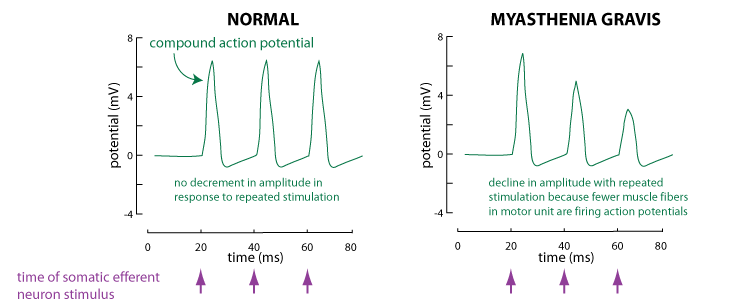Prepare to dive into a study that’s sure to give you a steroid-strength boost of knowledge. This month, we bring you a landmark study that has significantly impacted the management of myasthenia gravis (MG): “Long-term corticosteroid treatment of myasthenia gravis: report of 116 patients” by Pascuzzi, R M et al., published in Annals of Neurology in 19841.
Pascuzzi and colleagues conducted a retrospective analysis of 116 patients with MG who were treated with corticosteroids for at least 6 months. The study assessed the efficacy of long-term corticosteroid treatment in controlling the symptoms of MG and its side effects, with a particular focus on dose adjustments and tapering regimens.
The results showed that 74% of the patients experienced a substantial improvement in muscle strength, while 17% had moderate improvement, and only 9% showed no significant improvement. Remarkably, 62% of the patients achieved a complete or nearly complete remission of their symptoms during corticosteroid treatment. Moreover, 75% of patients who achieved remission were able to maintain their improved status with a low-maintenance dose of corticosteroids (prednisone ≤ 20 mg every other day).
However, corticosteroid therapy was not without side effects. Of the 116 patients, 60% experienced at least one significant corticosteroid-related side effect, such as weight gain, osteoporosis, diabetes, or cataracts. The authors found that the risk of side effects increased with higher cumulative corticosteroid doses and longer treatment durations.
Just as our patients with MG strive for that perfect balance of strength and function, we too must balance the benefits and risks of corticosteroid therapy. This landmark study demonstrated that a majority of patients with MG can achieve significant improvements in muscle strength and do so with a low-maintenance dose of steroids. However, the study also highlighted the need for careful monitoring of side effects and judicious use of corticosteroids to minimize potential risks.
Corticosteroids have continued to play a critical role in the management of MG since this study, along with other immunosuppressive therapies and symptomatic treatments; Palace et al. (1998) investigated the use of prednisolone in combination with azathioprine, demonstrating that this combination could reduce the maintenance dose of prednisolone required and minimize side effects2. More recently, Gilhus et al. (2019) published a review of the current and future therapies for MG, which builds on the foundation laid by Pascuzzi’s work3.
So, dear colleagues, as you flex your clinical decision-making muscles in your daily practice, remember the lessons from this landmark study. Pascuzzi et al. have shaped our understanding of the benefits and risks of long-term corticosteroid therapy in MG, underscoring the importance of individualized treatment approaches and close monitoring of patients.
References:
- Pascuzzi, R M et al. “Long-term corticosteroid treatment of myasthenia gravis: report of 116 patients.” Annals of neurology vol. 15,3 (1984): 291-8. doi:10.1002/ana.410150316
- Palace, J et al. “A randomized double-blind trial of prednisolone alone or with azathioprine in myasthenia gravis. Myasthenia Gravis Study Group.” Neurology vol. 50,6 (1998): 1778-83. doi:10.1212/wnl.50.6.1778
- Gilhus, Nils Erik et al. “Myasthenia gravis: subgroup classification and therapeutic strategies.” The Lancet. Neurology vol. 18,11 (2019): 1098-1110. doi:10.1016/S1474-4422(19)30264-1



